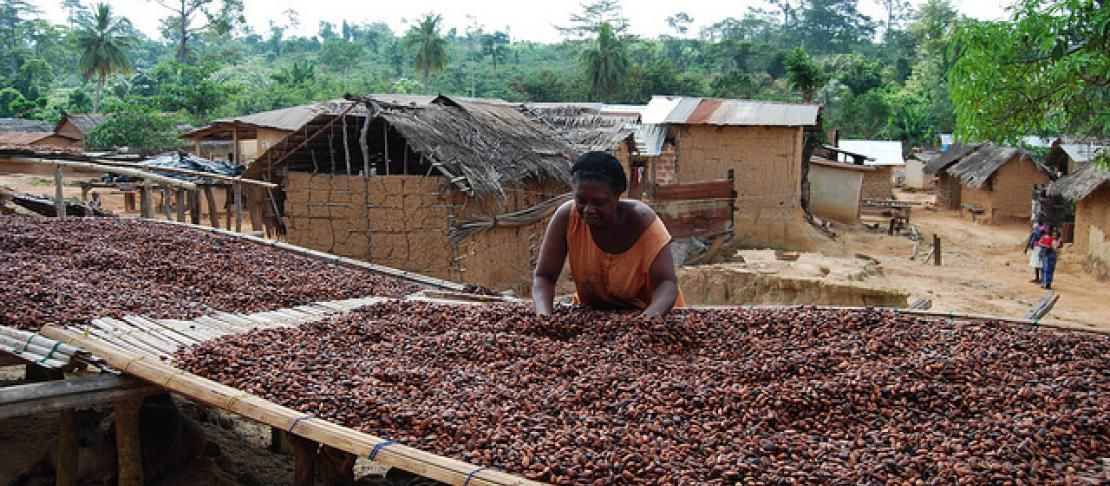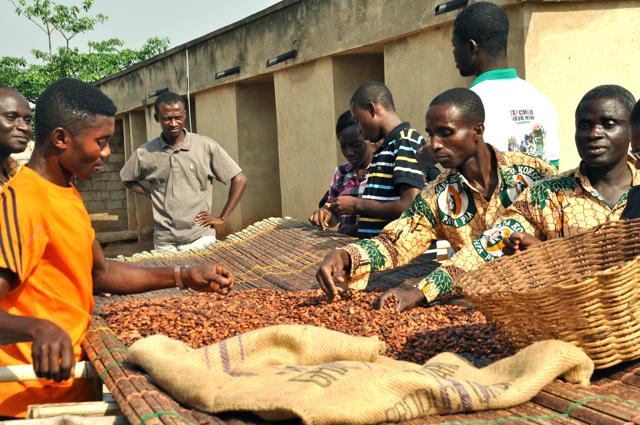Using bananas to fight gender imbalances on cocoa plantations

There is an interesting link between female empowerment, cocoa production and under-nourished children, a link that may not be visible at first glance.
You see, children growing up in areas that produce large quantities of cocoa tend to be stunted in growth and subject to higher rates of malnutrition compared to children in other, nearby regions. This is especially true for the Ivory Coast in West Africa.
Fighting under-nutrition in children is crucial. Not getting vital vitamins A:s, B:s and D:s early in life can have very negative consequences later on. For example, it has been shown that adults who were undernourished as children have 15 percent less cognitive capacity. This will affect a person for the rest of his or her life, and cannot be repaired by eating right later in life.
Raging gender imbalances in cocoa production
In reality, most cocoa smallholders live below the poverty line and lack access to nutritious food.
What's more, cocoa plantation ownerships in the Ivory Coast are normally reserved for men. This means that women don’t have equal income in intensive cocoa growing regions. A situation which puts stress on women in their roles as primary caretakers, as they can’t afford to buy nutritious food for their children.
In addition, cocoa fields can be almost infinite in size, which makes it very difficult for women to access markets to buy vegetables or fruits or find alternative occupations.
Women do however perform essential roles in farming cocoa. An Oxfam status report found that women’s work on the plantations traditionally has at best been underappreciated, but more often, completely ignored, and often underpaid.
Gender imbalances and unequal opportunities to cocoa plantation ownership are only few of many reasons why children growing up amidst cocoa plants are more malnourished than others. So explained Christophe Kouame, representing the Vision for Change (V4C) project at the World Agroforestry Centre side event, “Agroforestry for food and nutritional security in Africa”, held during the Africa Agriculture Science Week (AASW).

Cocoa production in West Africa is normally a man's world, suffering both from gender imbalances and increasing child malnutrition. Photo: R. BollWITT
To ensure that kids have a healthy childhood, the Vision for Change (V4C) organisation is encouraging women and men to plant fruit trees between the cocoa plants.
Bananas - a woman’s world
Fruit tree planting is a great opportunity to diversify cocoa production and to introduce nutritious food items into households in cocoa-producing regions. It is also something that can contribute to climate resilience, as households are then no longer dependent on one single activity.
For these reasons, banana trees are especially encouraged by the organisation.
“Banana trees belongs to the women, explained Christophe Kouame, “as this is food used for consumption. Women can sell the bananas to take care of the kids.
But banana tree planting is not that straight forward. You need special fertilizers and special skills to produce food in depleted soils. Vision for Change ensures that women get involved in the fruit tree planting project and that they recieve proper training to overcome these barriers. In the future, the organisation also hopes to help women break into the cash cropping systems that is cocoa production, so that they can earn the income required to send kids to school and buy nutritious food.
Get the presentation from the side event.
Cocoa plants are getting older and need rejuvenation or replacing
Fruit tree planting is also part of a rejuvenation project. The cocoa plants are getting old and less productive and therefore many of them might need to be replaced in coming years. By planting trees, depleted soils get new life breathed into them and cocoa plants get much needed shade. The hope is that these activities will create favourable growing conditions for cocoa plants, despite their age.
Sustainability was also a word that came up during the discussions. Planting and re-planting trees is hoped to bring an element of sustainability to the region. With better soils, cocoa plantation owners might not have to cut down additional forest areas to plant more of this important cash crop.
Learn more about benefits from intercropping: Bananas go very well with coffee for instance.
It is hoped, that by this continuous process of empowerment, knowledge sharing and income generation, in combination with environmental rehabilitation; the linkages between gender inequality, cocoa production and child stunting might no longer be a reality in a few years time.
Learn more about how we are working to bridge the gender gap in agriculture.
Cecilia Schubert works as a Communications Assistant at the CCAFS Coordinating Unit. Follow us live from the Africa Agriculture Science Week (#AASW6) on our blog and Twitter.



